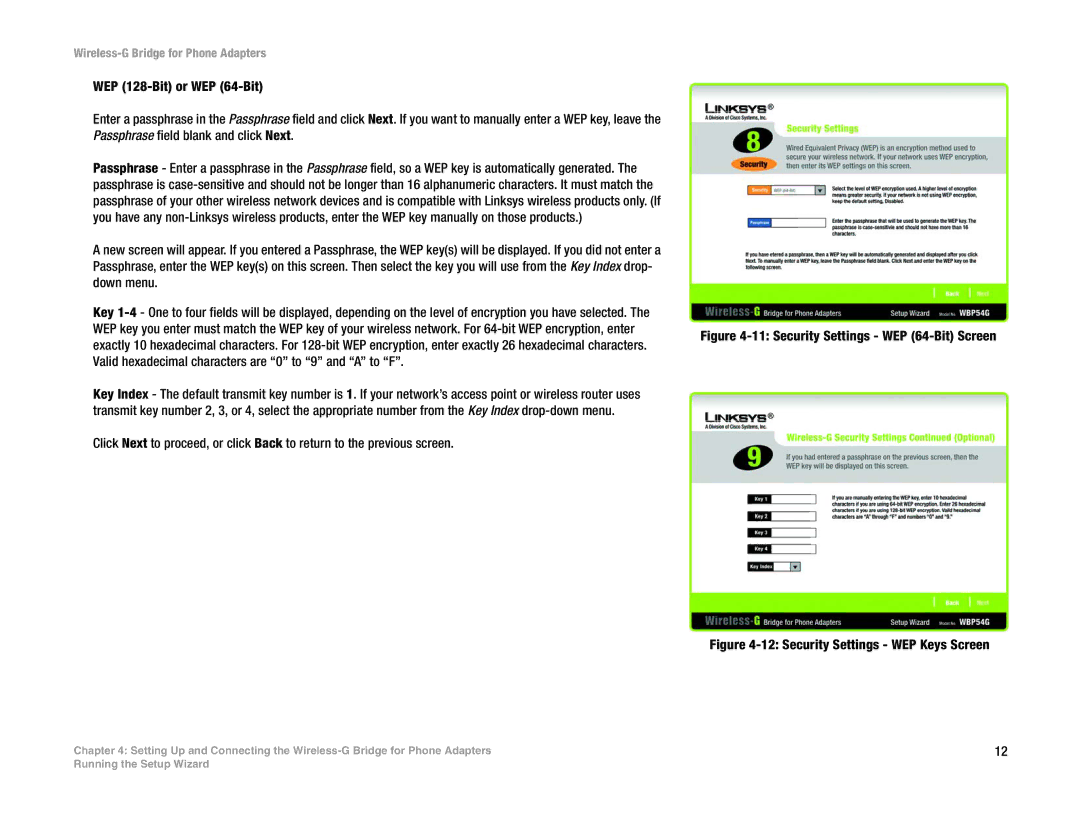
WEP
Enter a passphrase in the Passphrase field and click Next. If you want to manually enter a WEP key, leave the Passphrase field blank and click Next.
Passphrase - Enter a passphrase in the Passphrase field, so a WEP key is automatically generated. The passphrase is
A new screen will appear. If you entered a Passphrase, the WEP key(s) will be displayed. If you did not enter a Passphrase, enter the WEP key(s) on this screen. Then select the key you will use from the Key Index drop- down menu.
Key
Key Index - The default transmit key number is 1. If your network’s access point or wireless router uses transmit key number 2, 3, or 4, select the appropriate number from the Key Index
Click Next to proceed, or click Back to return to the previous screen.
Figure 4-11: Security Settings - WEP (64-Bit) Screen
Figure 4-12: Security Settings - WEP Keys Screen
Chapter 4: Setting Up and Connecting the | 12 |
Running the Setup Wizard
